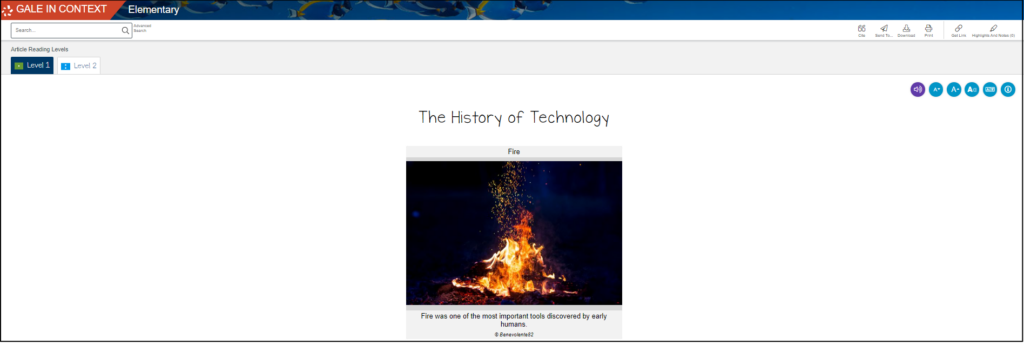| By Elizabeth Mohn |
New scientific discoveries and technological developments—such as advances in quantum computing, artificial intelligence, and space exploration—have captured headlines in the United States and around the world in recent months. These and other scientific and technological developments have highlighted the importance of science, technology, engineering, and mathematics (STEM) education, as students today will likely require significant experience with STEM topics to compete in the global marketplace. According to the U.S. Bureau of Labor Statistics (BLS), total employment in the United States will have increased by roughly 5 percent between 2021 and 2031; however, employment in STEM fields will have increased by roughly 10 percent in that same time.1The BLS also reported that the country’s median annual wage in 2021 was $45,760, yet the median annual wage among Americans employed in STEM fields was $95,420 that year.2Such statistics help support the argument that STEM education is vital for students’ future success. Teachers can lay the groundwork for such success by focusing on STEM topics in elementary school.
Gale In Context: Elementaryhas numerous new science sources that not only discuss topics that will engage students’ interest in STEM but also align to national scientific education standards, ensuring students who read them will develop the STEM knowledge and skills required in the modern world. Teachers can use these new resources to get students interested in topics they may have some interest in and to introduce new concepts and principles that they haven’t yet learned.
Discuss Technology and Scientific Advancements
An effective way of engaging students in STEM topics is to begin with ones that students already have an interest in or knowledge of—and technology is a topic in which most young people are interested. Teachers can relate technological advances to students’ everyday lives by pointing out the ways their lives would be different if they lived with the technology humankind had decades or even centuries earlier. Teachers can remind students that technological developments are important because they generally help solve problems and improve people’s lives in many ways. Teachers and students can work together to identify some of the technologies, including computing devices and vehicles, that people use every day in different parts of the world. Then, teachers can help students better understand how much technology has changed throughout human history using the newGale In Context: Elementaryresource “The History of Technology”。这篇文章将不仅帮助学生更好understand the changes that have occurred over time but will also help them understand that one type of technological discovery can help in the development of new discoveries. Teachers can encourage students to read the new article “Impacts of Technology.” It focuses on the effects that technology has on humans and society. The article can help students better understand how technology changes people’s lives and communities.
Focus on Other Current Events
Teachers can engage students in a broader range of STEM topics using other new science topics inGale In Context: Elementary. Some of these new resources deal with other current events. For example, record-high temperatures and climate change have influenced discussions about natural resources, including energy and freshwater resources. Teachers may want to help students better understand discussions about natural resources by encouraging them to read the article “Earth’s Resources.” It gives a broad overview of Earth’s resources—including its water, plants, animals, soil, and fossil fuels—and helps students understand their vital importance to humans and other living things.
Teachers can also discuss the reduction in biodiversity, which has been an important topic that has made headlines in recent years. They can help students better understand plants and animals and their interactions with their environments by encouraging them to read the articles “Animals and Their Environments” and “Plants and Their Environment.” In “Plants and Their Environment,” students will learn about what plants need to survive and the environments in which different plants grow. In “Animals and Their Environments,” students will read about what animals require to live and how they interact with the world around them.
Foster an Interest in STEM Careers
One goal many educators have when introducing STEM topics is to foster a lifelong interest in science for students. Teachers may be able to capture their interest for the long term by getting them interested in STEM careers. The new science topics inGale In Context: Elementarywill help teachers achieve that goal. For example, the article “Scientists, Engineers, and Technologists” gives a broad overview of the professions in STEM fields. It lists specific careers that people can have, and describes the work people in those careers commonly do. For example, the Level 2 version of the article describes the work done by physicists and chemists. It also explains the numerous different fields, such as electrical engineering and civil engineering, that engineers can pursue.
Teachers can help students learn even more about some specific STEM careers by focusing on important concepts and tools that certain STEM professionals use. The article “The Engineering Design Process” will help students understand the basic process that engineers use when designing and problem-solving. It explains that engineers try to solve problems with their work, that they must test their work to ensure it solves the problem effectively, and that they sometimes must change their work based on the tests. The article “Scientific Method”也评论干专业人士,所使用的方法as it explains the fundamental system that scientists and many others use to develop scientific theories.
These broad overviews will help students understand the processes that STEM professionals use, and will help students grasp fundamental concepts to use throughout their educational careers.

About the Author
Elizabeth Mohn is a writer and an educational content developer. When she’s not reading or writing, Elizabeth is usually spending time with her family, listening to podcasts, or working in her garden.





